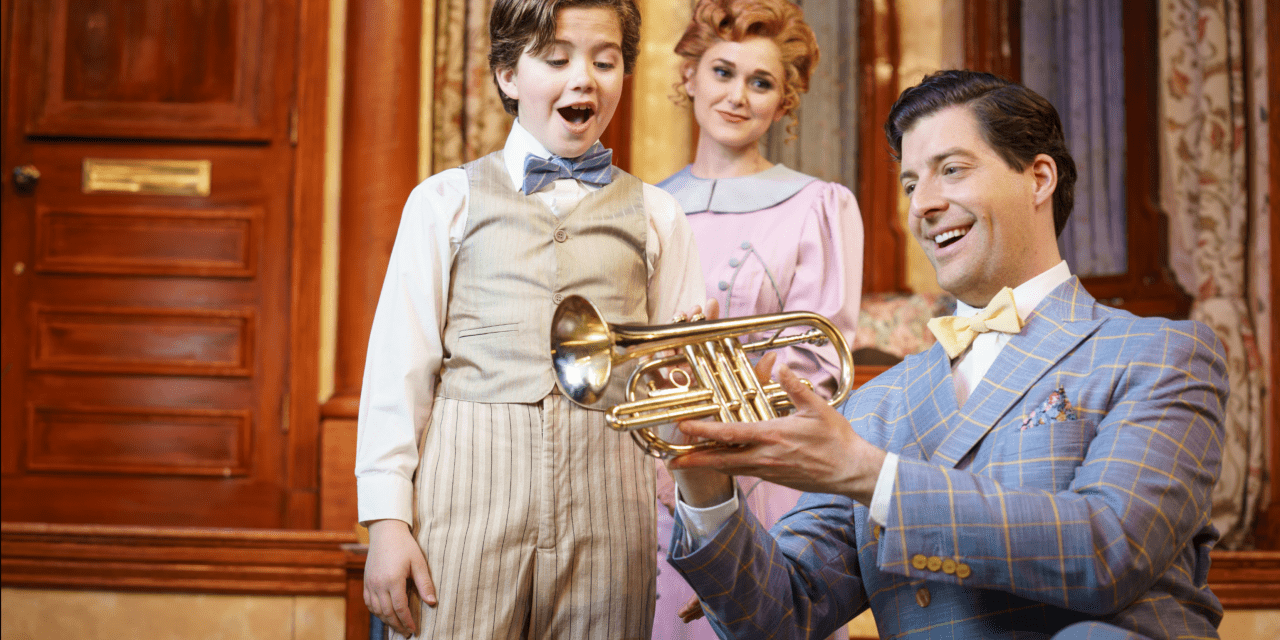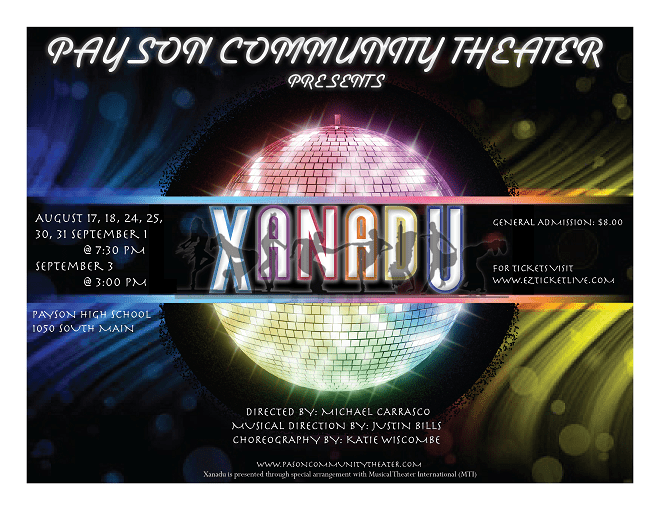SANDY — The Hale Center Theatre’s production of Meredith Willson’s The Music Man, directed by James Christian, is not unlike Professor Harold Hill, himself. It is slick, polished, even a joyful distraction—yet it lacks a certain something.

Show closes June 9, 2018.
To be sure, the folks at the Hale definitely “know their territory,” a necessary requirement for any salesman, as one character repeatedly reminds his audience in the opening number. The new theatre in Sandy freely invites sold-out audiences with its easy access off the freeway and garage parking, the sparkling open lobby with concessions and bathrooms aplenty (we live in a culture that craves convenience, after all). So, too, the Centre Stage with its stadium seating in the round provides ample space and clear viewing, and the stage floor lends itself to the most impressive visuals of the evening, with its various comings and goings, up and down, for every scene change. To be sure, the effort and creative strategy of Christian and set designer Kacey Udy to coordinate the moving parts of the stage seamlessly into the production was not lost on me. Udy is obviously adept at utilizing the facility’s vertical space and was able to suggest a traditional “hometown” feeling to the sparse set design while also including digital enhancements in the screens surrounding the top of the theatre.
Udy’s use of digital elements gave me a sense of metatheatricality that was supported in the production. For one, it is impossible in theatre in the round to forget that one is watching a play. There is, in fact, no suspension of disbelief when one is constantly aware of the other audience members watching the production, and this aspect was highlighted by Christian’s direction in the play (for example, in one scene Eulalie Shinn, played by Sharon Lynn Kenison, instructs her dance students never to turn their heads away from the audience, at which point the women all start turning their heads in an effort to see all of the Hale patrons laughing at their effort). Furthermore, all the numbers, and every scene are played “big.” There is no subtlety in this production, but this is not a criticism. The ability to play to and reach an audience as large as the one in Centre Stage is definitely a skill.

Left to right: Ryder Mason as Winthrop Paroo, Rachel Woodward Hansen as Marian Paroo, and Addison Welch as Harold Hill.
The actors and actresses in The Music Man are certainly capable. Professor Harold Hill, played by Addison Welch on the evening I attended, was the consummate salesman, convincing folks of their need to buy before slyly scooting off to the next customer. Welch played his part with the finesse of a leading man, though the arc of his character felt a little flat. Rachel Woodward Hansen as Marian the librarian was more well-rounded. The play is dated with problematic gender relationships glaringly obvious in the #metoo era, but Hansen uses this to her advantage as her character transforms over the course of the production. Other stand-out performances include Kenison as the Mayor’s wife Eulalie (who receives the most laughs in the production by far for her great timing and use of comedic physicality) and Ryder Mason as Winthrop, Marian’s lispy ten-year old brother, who brought depth to the production through an emotional performance impressive for an actor of his age.
Together, the entire cast created an ensemble that felt much like a close home-town, coming together in excitement and energy. Indeed, the best numbers in the production were those in which the stage was filled with the cast. Specifically, the number “Marian the Librarian” was most impressive with its playful choreography by Jennifer Hill Barlow taking place on two levels on the stage. So, too, any musical numbers involving comings and goings through the stage’s four entrances lent themselves to creative, delightful chaos. When the genders were separated, as is called for in the script, the abilities of the men and the women were highlighted. The iconic opening number “Rock Island,” which takes place on a train car and which calls for the men to use the song to create the sounds of a train, was a strength of the production. So, too, “Pick-a-Little/Goodnight Ladies” was a charming, memorable number enhanced by the oversized floral hats worn by the actresses, giving such a wonderful impression of gossipy mother hens. Indeed, costume designer Amanda Shaffer demonstrated great proficiency in her work. Her vision of the characters’ transformation from possessing a rather boring naivety to demonstrating enthusiasm and vigor was clear as the costumes changed from off-white tones in the beginning of the play to multi-colors as it wore on. Given the oft-minimal stage design, it was Shaffer’s work with costumes that gave the greatest visual impression, and she did not forget the details of hairs and hats and other things of the time period one would expect in The Music Man.
Generally, it could be said that most expectations for the production were met, especially if one were to expect such a well-known musical to be presented straightforward to its audience while acknowledging its own theatricality and playing up its most recognizable songs and scenes. However, just as Professor Harold Hill lacked the passion for music that would have made him a real music man and not a salesman, The Music Man at the Hale similarly lacks some of that elusive theatrical magic that touches the souls of the audiences. This is not to say the production is not enjoyable or valuable. (Professor Hill’s contribution to that Iowa town was real if not what he originally planned.) But maybe just that the production is a little too polished for its own good.





